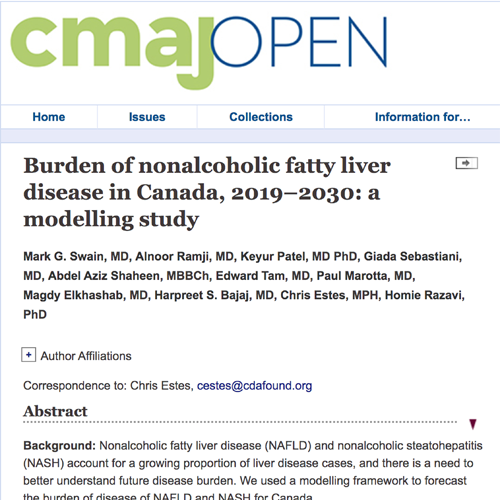Summary
Background
Nonalcoholic fatty liver disease (NAFLD) and nonalcoholic steatohepatitis (NASH) account for a growing proportion of liver disease cases, and there is a need to better understand future disease burden. We used a modelling framework to forecast the burden of disease of NAFLD and NASH for Canada.
Methods
We used a Markov model to forecast fibrosis progression from stage F0 (no fibrosis) to stage F4 (compensated cirrhosis) and subsequent progression to decompensated cirrhosis, hepatocellular carcinoma, liver transplantation and liver-related death among Canadians with NAFLD from 2019 to 2030. We used historical trends for obesity prevalence among adults to estimate longitudinal changes in the number of incident NAFLD cases.
Results
The model projected that the number of NAFLD cases would increase by 20% between 2019 and 2030, from an estimated 7 757 000 cases to 9 305 000 cases. Increases in advanced fibrosis cases were relatively greater, as the number of model-estimated prevalent stage F3 cases would increase by 65%, to 357 000, and that of prevalent stage F4 cases would increase by 95%, to 195 000. Estimated incident cases of hepatocellular carcinoma and decompensated cirrhosis would increase by up to 95%, and the number of annual NAFLD-related deaths would double, to 5600.
Interpretation
Increasing rates of obesity translate into increasing NAFLD-related cases of cirrhosis and hepatocellular carcinoma and related mortality. Prevention efforts should be aimed at reducing the incidence of NAFLD and slowing fibrosis progression among those already affected.
Countries: Canada

